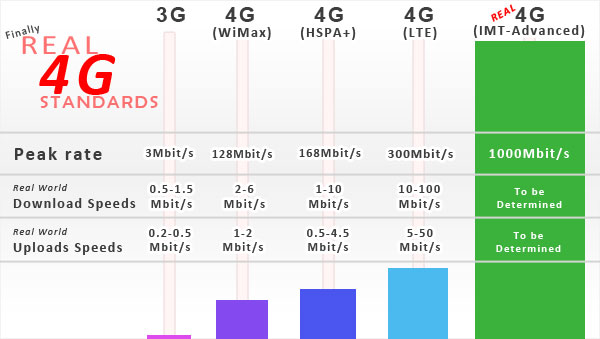“4G” is that the term accustomed ask the International Mobile Telecommunications-Advanced (IMT-Advanced) technology family of mobile wireless services, that has been outlined and sanctioned by the International Telecommunication Union (ITU). In associate degree Gregorian calendar month 2010 meeting, The ITU’s wireless Sector (ITU-R) unit 5D, that is liable for shaping the IMT-Advanced international 4G technologies, completed the assessment of six candidate technology submissions for the world 4G mobile wireless broadband technology. Of the proposals, 2 technologies, LTE-Advanced and WirelessMAN-Advanced, were every determined to possess with success met all of the factors established by ITU-R for the primary unharness of IMT-Advanced and were accorded the official designation of IMT-Advanced, qualifying them as 4G technologies. Final agreement of the total IMT-Advanced technology family transpire at the ITU-R Study cluster meeting on Nov twenty two and twenty three, 2010, in Geneva, European country.
As background for this IMT-Advanced project, ITU revealed a document, “Recommendation ITU-R M.1645: Framework and overall objectives of the long run development of IMT-2000 and systems on the far side IMT-2000.”
These technologies can currently move in the ultimate stage of the IMT-Advanced method, that provides for the event in early 2012 of associate degree ITU-R Recommendation specifying the in-depth technical standards for these radio technologies.
Over the last 25 years, ITU has developed the IMT framework of standards — or International Mobile Telecommunications
system — for mobile telephony and continues to lead international
efforts involving governments and industry players to produce the next
generation standards for global mobile communications.
Since 2000, IMT-2000 has been widely deployed and referred to as 3G. ITU has now announced the next-generation of standards for global wireless broadband communications, known as IMT-Advanced. Following a detailed evaluation against stringent technical and operational criteria, ITU has determined that "LTE-Advanced" and "WirelessMAN-Advanced" should be accorded the official designation of IMT-Advanced. The detailed specifications of IMT-Advanced technologies will be provided in a new ITU-R Recommendation expected to be announced during the Radiocommunication Assembly meeting in Geneva, 16-20 January 2012.
IMT-Advanced systems include the new capabilities that go beyond IMT-2000. They provide access to a wide range of telecommunication services supported by mobile and fixed networks, which are increasingly packet-based.
IMT-Advanced systems support low to high mobility applications and a wide range of data rates in accordance with user and service demands in multiple user environments. IMT-Advanced also has capabilities for high quality multimedia applications within a wide range of services and platforms, providing a significant improvement in performance and quality of service.
For research purposes, the target transmission rates for IMT-Advanced was set at 100 Mbit/s when used in a high mobility environment (e.g. driving in a car) and 1 Gbit/s in a stationary environment.
The term 4G remains undefined but it is being applied by operators to the forerunners of IMT-Advanced technologies — LTE, HSPA+ and WiMax and to other evolved 3G technologies, which provide a substantial level of improvement in performance and capabilities with respect to the initial third generation systems now deployed.
Since 2000, IMT-2000 has been widely deployed and referred to as 3G. ITU has now announced the next-generation of standards for global wireless broadband communications, known as IMT-Advanced. Following a detailed evaluation against stringent technical and operational criteria, ITU has determined that "LTE-Advanced" and "WirelessMAN-Advanced" should be accorded the official designation of IMT-Advanced. The detailed specifications of IMT-Advanced technologies will be provided in a new ITU-R Recommendation expected to be announced during the Radiocommunication Assembly meeting in Geneva, 16-20 January 2012.
IMT-Advanced systems include the new capabilities that go beyond IMT-2000. They provide access to a wide range of telecommunication services supported by mobile and fixed networks, which are increasingly packet-based.
IMT-Advanced systems support low to high mobility applications and a wide range of data rates in accordance with user and service demands in multiple user environments. IMT-Advanced also has capabilities for high quality multimedia applications within a wide range of services and platforms, providing a significant improvement in performance and quality of service.
For research purposes, the target transmission rates for IMT-Advanced was set at 100 Mbit/s when used in a high mobility environment (e.g. driving in a car) and 1 Gbit/s in a stationary environment.
The term 4G remains undefined but it is being applied by operators to the forerunners of IMT-Advanced technologies — LTE, HSPA+ and WiMax and to other evolved 3G technologies, which provide a substantial level of improvement in performance and capabilities with respect to the initial third generation systems now deployed.

No comments:
Post a Comment